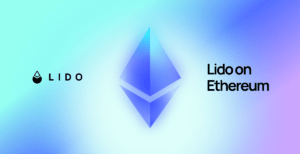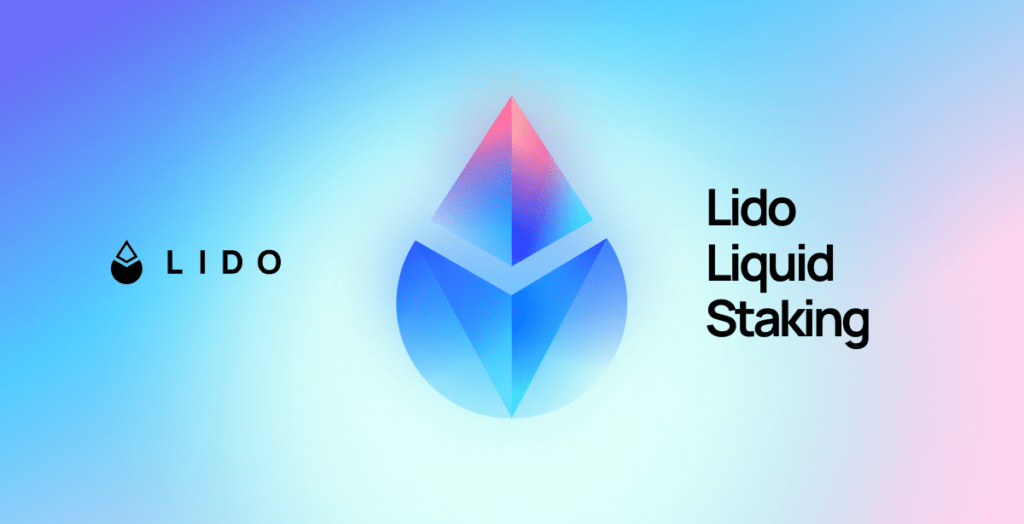Latest News
- Grayscale Updates Top 20 Asset List for Upcoming Quarter
- Judge / Comment on my degen bag
- Crypto Bloodbath! Ethereum, DOGE, and LIDO Crash
- Bitcoin, Ethereum, XRP, Dogecoin Slide As 'Dump On Sunday, Continuation On Monday' Becomes The Norm
Lido DAO (LDO) stands at the forefront of decentralized finance, offering innovative liquid staking solutions that address both liquidity and asset security.
With its impressive total value locked exceeding $10 billion and a significant share of staked ETH, Lido has established itself as a formidable entity within the DeFi ecosystem.
However, as with any investment, there are inherent risks and considerations that potential users must navigate.
Understanding how Lido operates and the implications of its governance model could provide critical insights into its future trajectory and relevance in the evolving landscape of digital finance.
Quick Overview
- Lido DAO enables liquid staking, allowing users to stake assets while retaining liquidity, primarily on Ethereum, Terra, and Solana networks.
- Users receive derivative tokens (e.g., stETH) that represent staked assets, which can be utilized across various DeFi platforms.
- The LDO token serves as a governance mechanism, enabling holders to propose and vote on protocol decisions and earn rewards.
- Lido captures over 30% of total staked ETH, showcasing its market dominance and competitive staking rewards.
- Risks include smart contract vulnerabilities and regulatory uncertainties, which may impact user engagement and market stability.

Overview of Lido DAO
Lido DAO (LDO) represents a significant innovation in the decentralized finance (DeFi) landscape, particularly in the domain of liquid staking. By enabling users to stake assets while maintaining liquidity, Lido addresses a critical limitation in traditional staking mechanisms, where staked assets often become illiquid for extended periods.
This dual functionality enhances capital efficiency, allowing users to earn staking rewards while simultaneously utilizing their tokens in other DeFi protocols.
The protocol primarily operates on Ethereum, supporting various proof-of-stake networks that include Terra and Solana. As of October 2023, Lido has secured over $10 billion in total value locked (TVL), making it one of the largest liquid staking platforms in the DeFi ecosystem.
This substantial TVL underscores the platform’s reliability and user trust.
Lido’s governance is facilitated through its decentralized autonomous organization (DAO), which empowers LDO token holders to participate in decision-making processes. This governance model guarantees that users have a say in protocol upgrades and changes, fostering a community-driven approach.
How Lido Works
Liquid staking is the cornerstone of Lido’s operational framework, facilitating a seamless integration of staking and liquidity. At its core, Lido allows users to stake their assets on various blockchains, such as Ethereum, while simultaneously receiving liquid tokens representing their staked assets. This mechanism enables users to engage in staking without sacrificing liquidity, a notable advancement in decentralized finance.
When users stake their assets through Lido, they receive staked tokens (e.g., stETH for Ethereum), which can be utilized across the DeFi ecosystem. These tokens accrue staking rewards, reflecting the user’s share of the rewards generated by the staked assets.
Lido employs a network of node operators who validate transactions and maintain the blockchain, ensuring security and decentralization.
Moreover, Lido’s architecture is designed to minimize risks associated with slashing, where validators might lose staked assets due to misbehavior. By diversifying staking among multiple validators, Lido considerably reduces the likelihood of slashing events impacting individual users.
Benefits of Liquid Staking
One of the primary advantages of liquid staking lies in its ability to provide users with enhanced liquidity while still participating in the staking process. Traditional staking often requires users to lock up their assets for an extended period, thereby limiting their access to capital.
In contrast, liquid staking allows participants to stake their assets while receiving a derivative token that represents their staked position. This enables users to trade or use these tokens in various decentralized finance (DeFi) applications, thereby maximizing their potential yield.
Additionally, liquid staking can lead to improved capital efficiency. Users can leverage their staked assets to participate in other investment opportunities, thereby diversifying their portfolios and mitigating risk.
Data shows that liquid staking solutions, such as Lido, have experienced substantial growth, with total value locked (TVL) exceeding billions of dollars. This trend indicates a strong demand for flexible staking options.
Furthermore, liquid staking promotes network decentralization by allowing more users to participate without the barriers typically associated with staking. This increased participation can enhance the overall security and resilience of blockchain networks.
Consequently, the benefits of liquid staking are clear, offering both liquidity and efficiency in the evolving DeFi landscape.
Lido’s Role in DeFi
As the decentralized finance (DeFi) ecosystem continues to expand, Lido has emerged as a pivotal player, facilitating seamless access to staking services for a diverse user base.
Lido’s liquid staking solution allows users to stake assets like Ethereum without locking them up, providing liquidity through staked tokens such as stETH. This innovative approach addresses the liquidity constraints typically associated with traditional staking, enabling users to participate in DeFi activities while still earning staking rewards.
Lido has captured significant market share in the Ethereum staking landscape, contributing to over 30% of the total staked ETH as of late 2023. This dominance is bolstered by its partnerships with various DeFi protocols, amplifying its utility within the broader ecosystem.
Users can leverage staked tokens in yield farming, lending, and other DeFi applications, effectively enhancing capital efficiency.
Furthermore, Lido’s governance structure, facilitated by the LDO token, empowers the community to influence protocol decisions and improvements.
This decentralized governance model fosters trust and aligns the interests of stakeholders, ensuring that Lido remains responsive to the evolving needs of the DeFi landscape, which is essential for its sustained relevance and growth.

LDO Token Utility
The utility of the LDO token is integral to the functionality and governance of the Lido protocol. As a governance token, LDO empowers holders to propose and vote on key decisions impacting the protocol, ensuring that users have a direct influence over its evolution. This decentralized governance model aligns the interests of stakeholders with the long-term objectives of the protocol.
Key utilities of the LDO token include:
- Governance Participation: LDO holders can vote on proposals that affect protocol parameters and strategic direction.
- Reward Distribution: LDO is used to incentivize various contributors within the ecosystem, including node operators and liquidity providers.
- Staking and Yield Opportunities: LDO holders can stake their tokens to earn rewards, enhancing their engagement with the platform.
- Liquidity Provisioning: The token facilitates liquidity in decentralized exchanges, allowing users to trade or swap LDO seamlessly.
Risks and Considerations
The Lido DAO (LDO) framework faces several inherent risks that potential investors should consider.
Smart contract vulnerabilities pose a significant threat to the integrity of the platform, while market volatility can adversely affect token value and user returns.
Additionally, the evolving regulatory landscape introduces uncertainty that may impact Lido’s operations and user engagement.
Smart Contract Vulnerabilities
Smart contracts, which automate and enforce agreements on blockchain networks, are not immune to vulnerabilities that can compromise their integrity and security. The decentralized finance (DeFi) landscape, exemplified by Lido DAO, heavily relies on these contracts, making them critical yet potentially hazardous components of the ecosystem.
Various factors contribute to the susceptibility of smart contracts to attacks and failures.
- Coding Errors: Flaws in the code can lead to unintended behaviors, often exploited by malicious actors.
- Reentrancy Attacks: A common vulnerability where an attacker can repeatedly call a function before the previous execution completes, draining funds.
- Gas Limit and Loops: Inefficient code can lead to excessive gas consumption, causing transactions to fail and potentially locking funds.
- External Contract Dependencies: Reliance on external contracts can introduce risks; if a dependent contract has vulnerabilities, it can affect the security of the primary contract.
Understanding these vulnerabilities is essential for Lido DAO stakeholders to implement robust security measures, conduct thorough audits, and remain vigilant against potential exploits that could undermine user trust and financial stability.
Market Volatility Impact
While Lido DAO offers innovative solutions for liquid staking, it is not insulated from the effects of market volatility, which can greatly impact both user participation and the overall stability of the platform. The cryptocurrency market is notoriously volatile, with price fluctuations often exceeding 10% within short time frames. Such volatility can lead to fluctuations in the value of staked assets, affecting user confidence and engagement.
When the underlying assets experience significant price drops, users may withdraw their staked tokens to mitigate losses, resulting in reduced liquidity and higher slashing risks for stakers. This withdrawal dynamic can create a feedback loop, where decreasing user participation further exacerbates market instability.
According to data from Glassnode, periods of high volatility are often correlated with increased sell-offs in liquid staking protocols.
Moreover, market sentiment can influence Lido’s governance token, LDO, which may experience drastic price swings based on broader market trends. A decline in LDO value could deter new user participation, impacting the platform’s growth and sustainability.
Consequently, while Lido DAO aims to democratize staking, it must navigate the inherent risks associated with fluctuating market conditions.
Regulatory Environment Uncertainty
Regulatory uncertainty poses significant risks and considerations for Lido DAO and its stakeholders, particularly as governments worldwide grapple with how to categorize and regulate decentralized finance (DeFi) platforms.
The evolving regulatory landscape can have profound implications for Lido’s operational framework, user adoption, and overall market position. Stakeholders must remain vigilant as potential regulations could alter the viability and attractiveness of Lido’s offerings.
Key considerations include:
- Compliance Costs: Increased regulatory scrutiny may lead to higher compliance costs, impacting profitability and operational efficiency.
- Market Access: Regulatory barriers could limit Lido’s ability to operate in certain jurisdictions, affecting its user base and liquidity.
- Innovation Stifling: Overregulation may hinder innovation within the DeFi sector, potentially rendering Lido less competitive against traditional finance solutions.
- Legal Liabilities: Unclear regulatory definitions may expose Lido DAO to legal risks, including penalties and litigation, which could jeopardize its long-term sustainability.
Comparing Lido With Alternatives
As the demand for liquid staking solutions grows, Lido DAO (LDO) positions itself as a prominent player in the decentralized finance (DeFi) landscape, particularly in comparison to its alternatives.
Lido’s unique proposition lies in its ability to offer liquid staked assets while maintaining high liquidity and flexibility for users. Unlike traditional staking mechanisms, which lock up assets, Lido allows users to stake their Ethereum and receive stETH, a token that can be used within the DeFi ecosystem.
When analyzing alternatives, platforms like Rocket Pool and Coinbase’s staking service emerge as key competitors.
Rocket Pool employs a decentralized approach, allowing users to become node operators, which may appeal to those valuing decentralization. However, it typically requires higher technical knowledge and a minimum of 16 ETH to participate as a node operator, potentially limiting accessibility.
Coinbase, while user-friendly and regulated, lacks the same level of decentralization and flexibility as Lido. In addition, Lido’s staking rewards consistently outperform many alternatives, often due to its larger user base and capital efficiency.
Ultimately, while alternatives exist, Lido’s combination of liquidity, user experience, and competitive yields solidifies its position as a leading choice in the liquid staking market.
Future Developments
The future of Lido DAO (LDO) is poised for significant evolution as the liquid staking landscape continues to mature. As decentralized finance (DeFi) grows, Lido aims to enhance its platform to meet the increasing demand for liquid staking solutions. Anticipated developments could further solidify Lido’s position as a market leader.
Key areas of focus for Lido DAO’s future include:
- Expansion of Supported Assets: Lido plans to increase the variety of staking assets available, allowing users to stake a broader range of cryptocurrencies.
- Enhanced User Experience: Improvements in the platform’s interface and functionality are expected, making staking easier and more intuitive for users.
- Interoperability Initiatives: Lido aims to develop cross-chain capabilities, allowing users to stake assets across different blockchain networks, enhancing liquidity and accessibility.
- Governance Enhancements: Ongoing improvements in the DAO’s governance structure are anticipated, promoting greater community engagement and decision-making efficiency.
These developments will not only enhance user satisfaction but also position Lido DAO strategically within the evolving DeFi ecosystem, ensuring its relevance and competitiveness in the future.
Getting Started With Lido
A thorough understanding of how to utilize Lido DAO (LDO) is essential for anyone looking to engage with liquid staking effectively. Lido allows users to stake various cryptocurrencies, primarily Ethereum, while retaining liquidity through the issuance of staked tokens (stETH).
To get started, users must first acquire the desired cryptocurrency, typically through exchanges such as Coinbase or Binance. Once the cryptocurrency is secured, users can visit the Lido platform to initiate the staking process.
The Lido interface is user-friendly; users simply select the amount to stake and confirm the transaction. In return, they receive stETH, which can be used across decentralized finance (DeFi) protocols, allowing for further investment opportunities.
Monitoring staking rewards is vital, as users earn rewards proportional to their stake. The Lido platform provides clear analytics on accrued rewards and overall staked amounts.
Additionally, users must be aware of the potential risks, including smart contract vulnerabilities and slashing penalties. Engaging with the community through forums and governance proposals can enhance understanding and participation in the Lido ecosystem.
Frequently Asked Questions
What Security Measures Does Lido DAO Implement to Protect User Funds?
Lido DAO employs robust security measures, including multi-signature wallets, regular audits, and decentralized governance mechanisms, to safeguard user funds. These strategies enhance resilience against potential vulnerabilities and guarantee a secure environment for asset management.
How Does Lido DAO Handle Network Upgrades or Changes?
The organization employs a structured governance process to manage network upgrades, facilitating community discussions and proposals. This includes voting mechanisms that guarantee stakeholder input and consensus, thereby promoting transparency and alignment with the protocol’s long-term objectives.
Is There a Minimum Amount of ETH Required to Stake on Lido?
Yes, Lido requires a minimum of 0.1 ETH to stake, enabling broader participation in Ethereum staking. This threshold facilitates accessibility while maintaining network security and efficiency in validating transactions and securing the blockchain.
Can Users Unstake Their ETH at Any Time on Lido?
Users cannot unstake their ETH at any time; a withdrawal queue exists, and the process is subject to the protocol’s rules. Changes in network conditions may also impact the timeline for unstaking transactions.
How Does Lido DAO Manage Its Governance and Decision-Making Processes?
Lido DAO employs a decentralized governance model, utilizing token-based voting mechanisms. Stakeholders participate in decision-making processes by proposing and voting on initiatives, ensuring collective input and transparency in protocol enhancements and operational modifications.
Wrapping Up
To sum up, Lido DAO represents a significant advancement in decentralized finance, offering liquid staking solutions that enhance user liquidity while participating in staking.
With a substantial market share and robust governance structure, Lido has established itself as a leader within the DeFi space.
However, potential users should remain vigilant regarding inherent risks, including smart contract vulnerabilities and market fluctuations.
Continued innovation and adaptability will be essential for Lido to maintain its competitive edge in a rapidly evolving regulatory landscape.

